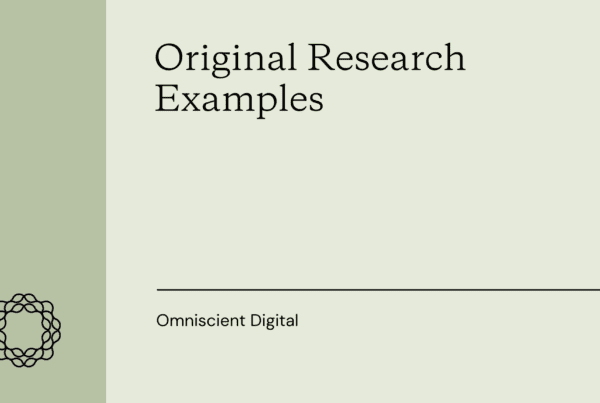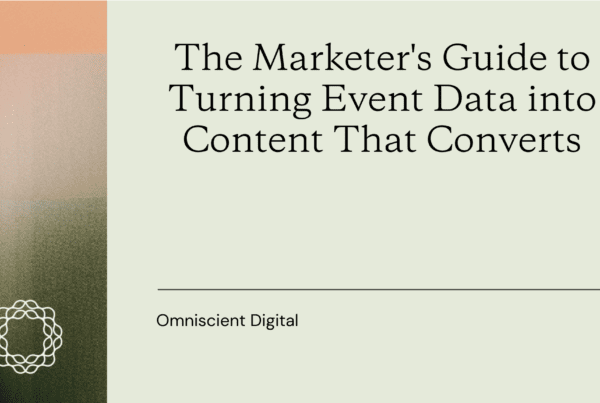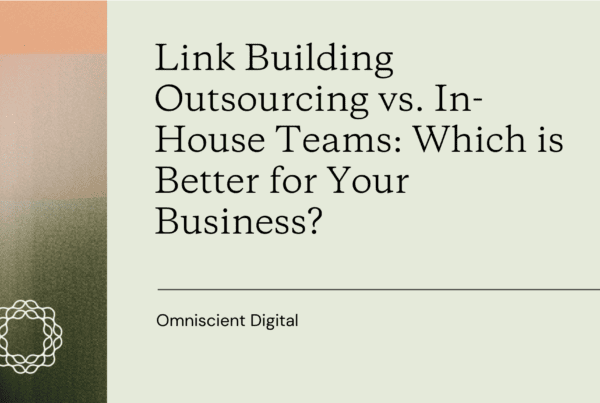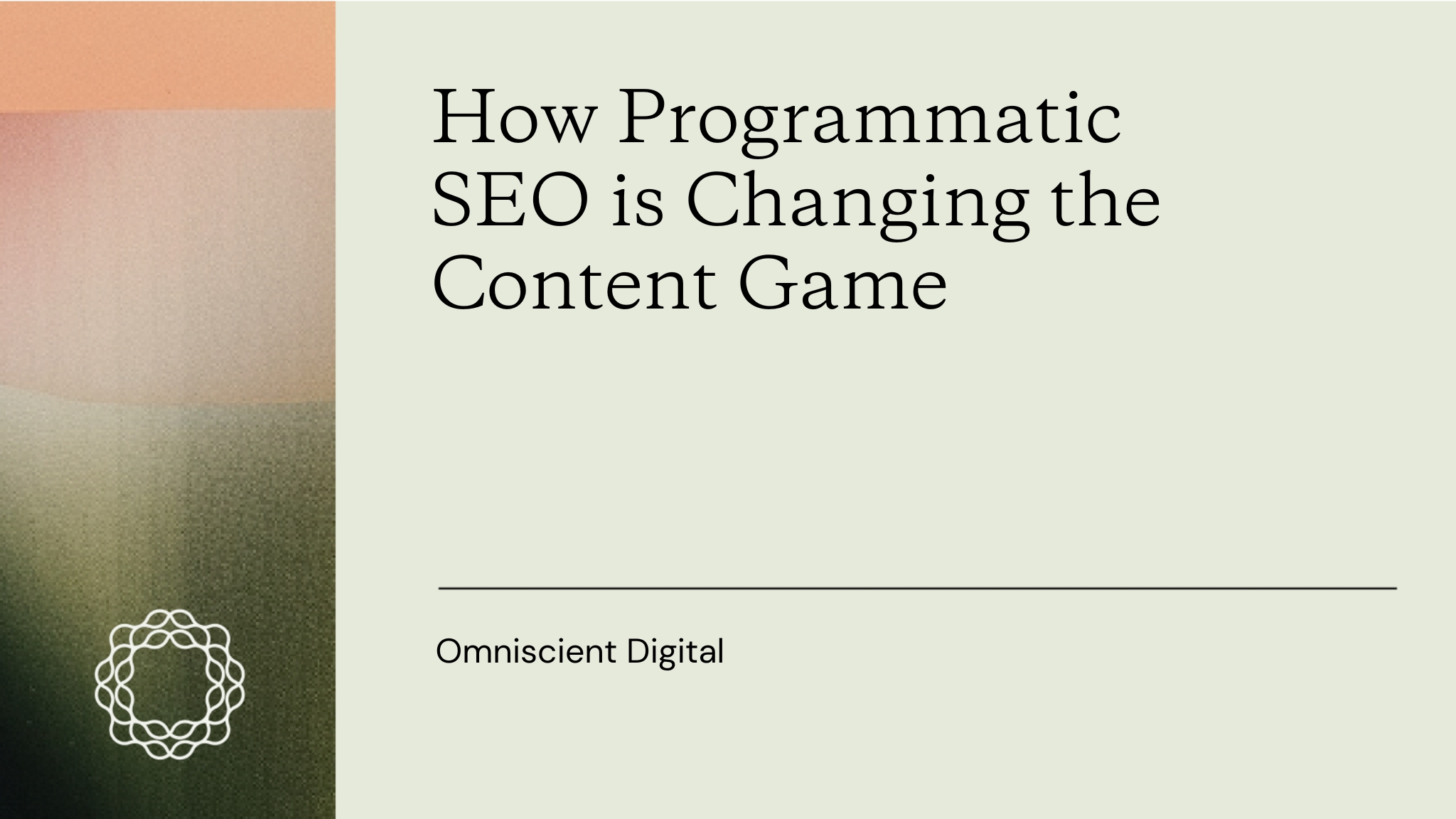
SEO isn’t what it used to be. I still remember the days when you could stuff a few keywords into a blog post, slap in a couple backlinks, and watch the rankings roll in. It was a simpler time. But that playbook is obsolete now.
Digital marketing has evolved quickly. And with the rise of AI, the pace is only accelerating. If you’re still relying on outdated tactics, you’re not just falling behind—you’re becoming invisible.
Search engines are smarter. Algorithms have leveled up. And to stay competitive, you need to shift gears. Instead of trying to game the system, you have to show up authentically, consistently, and at scale.
Programmatic SEO can help. This data-driven approach brings structure and scalability to content optimization by prioritizing relevance, user intent, and utility to match the way modern search engines work. When used correctly, it boosts visibility, performance, and agility across your entire content library so you can keep pace with the ever-changing SERP instead of getting left behind.
From manual grind to systematic scale
Manually writing every landing page and blog post is no longer sustainable. Especially if you’re trying to win across hundreds (or thousands) of long-tail keywords.
Programmatic SEO flips the script. It enables you to create high-quality, templatized content at scale, targeting everything from hyperlocal queries to seasonal trends. Rather than sacrificing quality, it creates a repeatable system that balances efficiency with depth.
This approach to SEO isn’t about churning out generic pages. It’s about using data to guide content creation by layering in variables like location, product attributes, or customer segments. You aren’t guessing what to write—you’re responding to actual demand signals.
And when Google updates its algorithm (again)? No sweat. Programmatic systems are built to adapt. You can iterate, update, and pivot without wasting time trying to create a whole new plan. If you want to better understand programmatic SEO, you can enroll in a digital marketing course to help you master these strategies and understand how to effectively use data-driven techniques to boost online visibility and engagement.
Programmatic SEO = scalable precision
Publishing one-off blog posts isn’t enough anymore. The competition is too fierce. The bar for quality is too high. Add in ever-evolving user expectations, and it’s basically an impossible approach.
Programmatic SEO helps you scale with precision:
- You’re not just creating more pages—you’re building ones that actually connect with your audience.
- You’re not wasting resources guessing what people want—you’re focusing on real search intent.
- You’re not left scrambling after each algorithm shift—you have an infrastructure that adapts on the fly.
No, programmatic SEO isn’t a magic bullet (nothing in SEO is anymore), but it’s definitely a strategic unlock. Pair it with smart planning, and it becomes an incredibly powerful tool for organic growth—especially if you’re fighting for attention in a fast-moving, high-competition vertical.
Key benefits of programmatic SEO
Traditional SEO is time-consuming, and automation can help you scale. Since everyone already knows that, you’ll have to take things further. When you need dozens (or even thousands of pages), programmatic SEO helps you capture new opportunities and generate high-quality content. Not useless filler.
Enhanced content personalization
One of the best things about programmatic SEO is that it lets you dynamically insert local details, testimonials, and up-to-date data on each page. That type of personalization doesn’t just get the attention of search engines, it also creates a more engaging user experience, reducing bounce rates and increasing conversions.
We saw this firsthand working with an early-stage startup building AI tools for designers. In addition to editorial SEO, technical fixes, and early link building, we helped them launch a semi-programmatic product templates library.
I say “semi-programmatic” because it was a blend of:
- User-generated content (users made the templates and shared them in the active user community)
- Long-tail keyword research
- Product-led SEO (incorporating these templates into the product itself)
- Programmatic components (on-page SEO, copywriting, and the generation of the templates by users)
And it worked really well. From the very first published template, we saw rankings, traffic, and product signups—all of which grew exponentially month-over-month.
Why did we see this success?
- The content was unique (created by users)
- It was genuinely useful (tied directly to the problems the product actually solved)
- It reduced friction and collapsed the customer journey from MOFU searches like “mobile app design templates” into a quick onboard for an actual product
Competitive advantage in niche markets
If you want to own your corner of the market, stop fighting over the same generic keywords as everyone else. Programmatic SEO helps you gain visibility in underexploited niche segments where competitors aren’t even looking. That way, you lead instead of just compete.
Improved efficiency and cost-effectiveness
Automation that considers strategy and quality is way more than standard process automation. Sure, it still helps you ditch a bunch of time-consuming tasks. But it also delivers consistency across a massive content library and a much healthier ROI.
Precision targeting with programmatic SEO
A good programmatic SEO strategy doesn’t just scale content. It scales relevance. Instead of chasing broad, competitive keywords, it helps you tap into the long tail. Thousands of high-intent, low-competition keywords that are easy to rank for and valuable to convert.
The idea is simple. Pair structured data with dynamic templates to generate targeted pages that collectively drive results. Start with rock-solid keyword research and align it with user intent. Then, pump out pages that are actually useful—not just technically optimized. Create content that hits the mark, and conversions come naturally.
Comprehensive keyword research
Before you start automating content, dig into long-tail keywords, user intent, and seasonal trends. Data is still king, so make sure every page reflects what real users want.
Structured data and well-planned keyword research make all the difference for precision targeting. Pick a search class to target, like “[product] vs. [product]” comparisons, “[service] in [location],” or “how to fix [error message] for [device].” Then use variable components (product names, locations, error codes, etc.) to generate pages for every possible combo.
This RTINGS.com case study from Ahrefs shows how well this works. The tech review site built a comparison template and created over 2,400 pages for every pair of electronics it reviewed. Those pages pulled in more than 200K visits a month. That’s traffic from super-specific searches the site would’ve missed if it only chased broad terms like “best TV.”
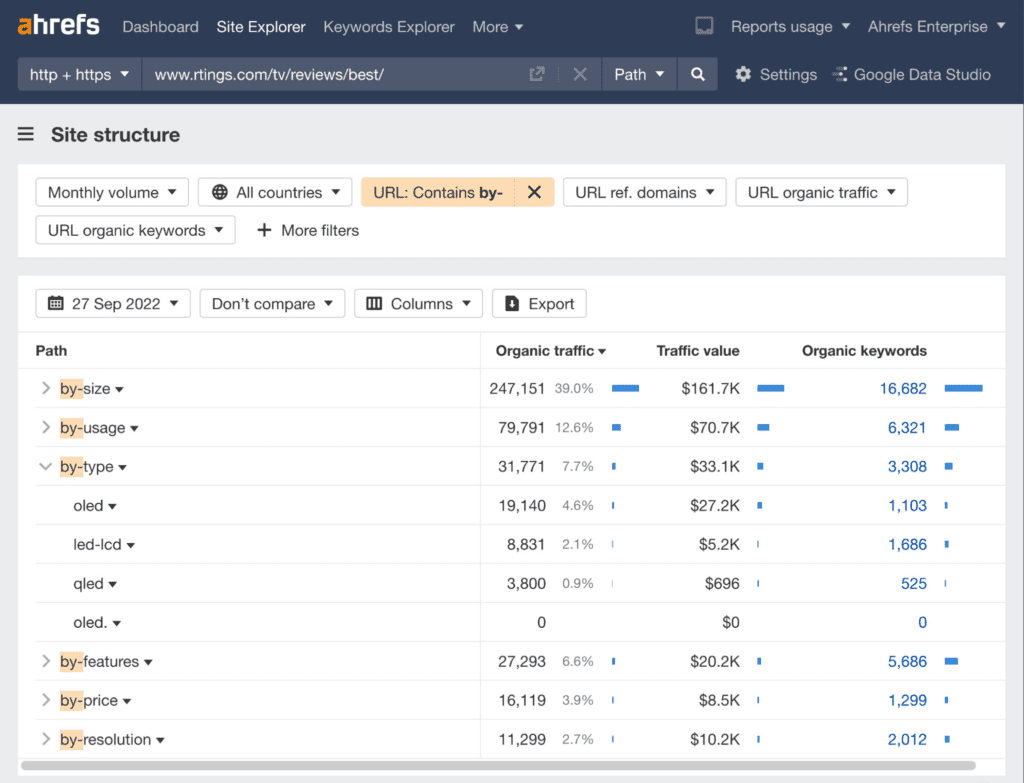
Targeting low-competition, high-intent keywords
With programmatic SEO, you don’t need to swing for the fences on every keyword. In fact, you shouldn’t.
Skip the hyper-competitive head terms. Go after low-competition, high-intent keywords instead—the kind that are easier to rank for and signal real purchase intent. They won’t move the needle by themselves. But stacked together? They can add up to something substantial.
Start with keywords in the “easy” or “very easy” difficulty range (per tools like Ahrefs or Semrush). Larger competitors tend to ignore these in favor of chasing vanity metrics. That means they’re wide open for you to dominate. And because you’re working at scale with templates you can afford to target hundreds (or thousands) of them.
Going after long-tail queries
Long-tail keywords like “best budget laptop under $300” are too niche to justify an entire content campaign. But when you scale this strategy, the collective impact is substantial.
The video messaging platform Loom is a great example. By identifying repeatable keyword patterns for long-tail use cases, we published a pilot of several dozen programmatic pages. Within weeks, they were bringing in thousands of search visitors. Given Loom’s typical conversion rates and average customer value, the campaign was on track to reach ROI-positive status in just three months. That’s how fast a smart programmatic strategy can pay off.
Programmatic SEO also shines when you want to cover every variation of a query pattern. Consider location-based searches. A travel site or even an AI travel app might want a landing page for every city or tourist attraction worldwide. Manually, that’s untenable. But with a structured database of locations and a scalable template? It’s totally doable.
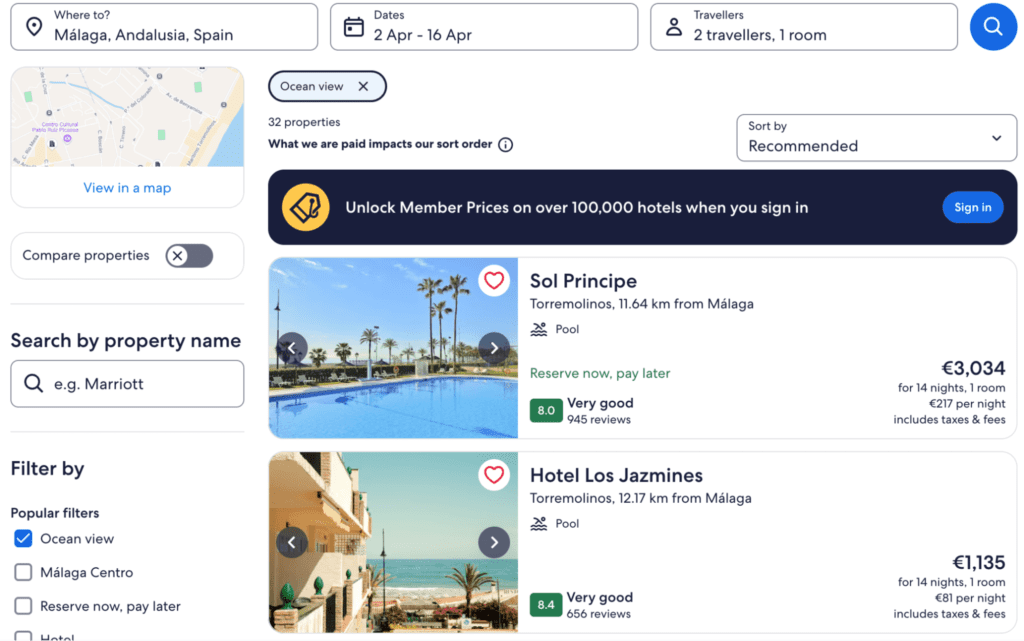
Expedia and other travel sites show this exact programmatic SEO strategy in action. By generating pages like “top hotels in [city]” for nearly every city you can name, they can create an expansive web of targeted search entry points.
Airbnb is another compelling case. The company used template-based pages for each city and neighborhood with listings to capture rental searches at scale. Organic search became their #1 marketing channel and played a big role in their $84B valuation.
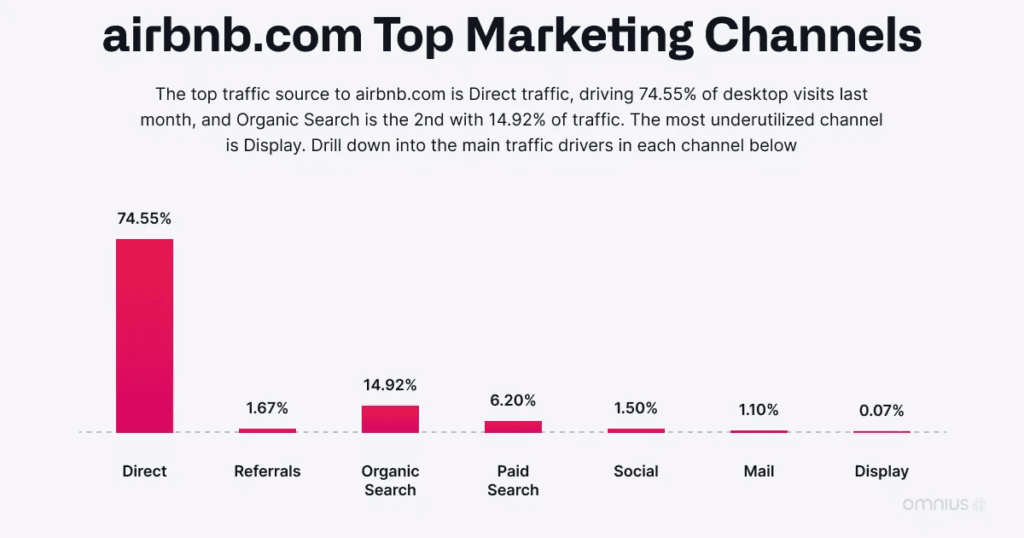
Blanket topic coverage with templates + data
Let’s look at this with a hypothetical example.
You run an e-commerce site that sells auto parts. Instead of writing individual blog posts about brake pads, you build a system to generate landing pages for every [Make] + [Model] + [Year] combo.
Now you’ve got a page for:
- Brake pads for 2018 Honda Civic
- Brake pads for 2019 Ford F-150
- Brake pads for 2021 Toyota Corolla
Each page pulls in the right product data, vehicle fitment info, and maybe a few templated FAQs. You’re not reinventing the wheel—you’re feeding a well-designed template with accurate info. And you’re giving searchers exactly what they asked for.
This kind of specificity is SEO gold. Users are happy, Google is happy, and you get pages that actually rank and convert.
Aligning content with user intent
The real win here isn’t just traffic. It’s alignment with intent.
Most programmatic pages focus on bottom-of-funnel queries—long-tail searches with transactional or commercial value.
- “Best CRM for real estate teams”
- “Apartments in Mission Hill, Boston”
- “Compare QuickBooks vs. FreshBooks for freelancers”
These aren’t curiosity clicks. They’re decision-stage queries from people ready to take action.
That’s why programmatic SEO works so well for:
- Product comparisons (users actively evaluating options)
- Local service landing pages (looking for providers nearby)
- Real estate or rentals (“condos in 90210”)
Platforms like Zillow and Redfin use this at scale. They create pages for every neighborhood, ZIP code, and listing category. The goal isn’t to win the homepage race. It’s to show up in every hyper-specific search a buyer or renter might run.
You can do the same. It doesn’t matter if you sell software, services, or something physical. The key is to map intent patterns, build content around them, and make templates that deliver actual value. Programmatic SEO isn’t just scalable. It’s useful. And that’s the kind of content that wins.
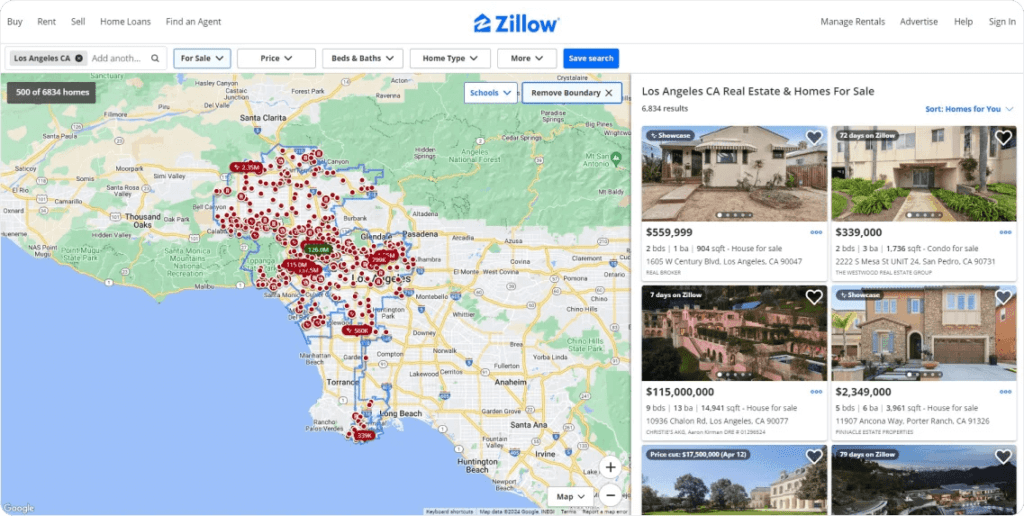
Minimizing keyword cannibalization
Another win? Programmatic SEO naturally reduces keyword cannibalization.
One common SEO trap is over-optimizing a single page to rank for dozens of variations. You end up with a muddled piece that tries to do too much and ends up doing none of it well. You confuse the algorithm and dilute your relevance.
Programmatic SEO changes that. It generates specific pages for specific queries. One intent, one page. This tells search engines which page answers which query. You get cleaner site architecture. Less internal competition. And better odds of each page ranking.
But volume only works when quality stays high. Each page still needs to be useful and valuable. The bar isn’t lower. It’s just distributed across many pages. Do this right, and you’ll weave a strategic web where each thread catches the right user at the right time.
Best practices for implementing a programmatic SEO strategy
Here’s what I’ve learned: Successful programmatic SEO is less about automation and more about disciplined execution. It’s not just a spreadsheet and a template. It’s strategy, research, and iteration.
1. Start with deep customer understanding
Before we build anything, we go back to the foundation. Who are we building for, and why?
- We dig into product value props and the ICPs that matter.
- We scour Reddit, Quora, and UGC platforms to spot recurring pain points or job-to-be-done phrasing.
- We map these insights against SERP analysis to validate actual demand and intent.
This ensures we’re not just chasing keywords. We’re solving problems that real users care about.
2. Build adaptable templates with dynamic placeholders
Programmatic SEO hinges on your content framework.
You want flexible templates that can scale across variables like:
- Geographic regions
- Product categories
- Feature use cases
- Service variations
The goal? Each page should be unique but familiar—like variations on a theme. Quality should never feel templated. Even if it is.
3. Clarify search intent
Every page should have a singular, unambiguous focus.
Are you trying to educate? Convert? Compare? Rank? Decide the goal, then create your content and headings accordingly. Add structured data markup where it helps clarify purpose.
Intent-matched content is table stakes now. You’re not just ranking. You’re satisfying.
4. Get technical SEO right from day one
No matter how good your content is, it won’t rank if the technical foundation is broken.
- Fast load times
- Mobile-first design
- Clean URLs
- Proper canonicalization
- Scalable internal linking logic
- XML sitemaps with index control
These aren’t optional. They’re prerequisites.
5. Use strategic internal and external linking
Internal links are the glue that holds your program together. New pages must link to related pages. Other relevant pages must link back. This creates a contextual cluster and reinforces topical authority.
External links matter also. They may not be as easy to scale, but they’re still one of the clearest signals of credibility. Smart PR, advanced link building, and passive link assets have to be part of your strategy.
6. Monitor, measure, and optimize relentlessly
This isn’t a set-it-and-forget-it situation.
- Use GA4 and Google Search Console to identify high- and low-performers.
- Update meta tags, headlines, and copy based on CTR or bounce data.
- Prune or merge underperforming pages.
- Add internal links to boost visibility of newly indexed content.
This is a living system. It needs upkeep.
Measuring programmatic SEO performance (the right way)
Let’s talk metrics. This is where people often misstep.
The trick with programmatic SEO is to evaluate program-level performance—not individual page results. Not every page will win. And that’s okay. The goal isn’t a 100% success rate. It’s scale + ROI.
Look at it in tiers:
- Leading indicators
- Indexed pages
- SERP rankings for targeted long-tails
- Organic sessions (per page and across the group)
- CTR and bounce rate
- Lagging indicators
- Signups
- MQLs/SQLs
- Revenue attribution
- Product usage (especially for PLG models)
For product-led businesses, signups and activated users are often the clearest KPIs. If your programmatic pages don’t map to product utility, they probably won’t convert. It’s best to build programmatic SEO hubs that match how users discover and adopt your product.
If you aren’t already doing this, start measuring from product backward. Not just traffic forward.
Potential pitfalls in programmatic SEO
Even the best approach comes with challenges. Technical issues, content quality at scale, shifting user needs. You have to address it all to remain effective.
The first real challenge? Knowing when programmatic SEO is the right move. It’s not a shortcut for scaling mediocre content. It only works when there’s a real opportunity. Which usually means you’ve got product-lead utility and access to unique data. Think Zillow, Thumbtack, Pinterest. Different tactical executions, same core principle. Solid integration between product and SEO. .
The second challenge is technical execution at scale. If your pages are fed by a dynamic database (weather data pulled from a third-party API), this is a bit easier. But if they require regular content updates (product comparisons with changing pricing or features) things get trickier.
You can solve this in different ways. Maybe it’s dynamic database updates to LLM evaluations or scheduled content refreshes. Just make sure you’re thinking about maintenance before you launch. At scale, upkeep is strategy.
Managing content quality
Just because you automate content doesn’t mean quality has to suffer. Thin, repetitive pages are a good way to get bad results. Build quality checks into your process from day one. Ongoing audits, editorial reviews, and performance monitoring keep standards high. You deliver content with real value instead of just generating traffic.
Human oversight is non-negotiable in programmatic SEO. Even automated pages need a human touch to align with brand voice and meet user intent. Skipping oversight doesn’t just result in a piece of crappy automated content. It can drag down your entire domain’s rankings.
Ensuring a positive user experience
Optimizing for search engines isn’t enough. Every page must be easy to read, navigate, and use. Especially on mobile. Create an experience that falls short, and users bounce instead of convert. Quality content or not.
Preventing indexation errors
One last warning: Rapid content production can introduce technical issues. I’ve learned the hard way how errors sneak in with robots.txt issues, sitemap gaps, and messy canonical tags. Comprehensive technical checks are a must.
Long-term impact on digital marketing
Programmatic SEO isn’t just a trend. It’s fundamentally changing the digital marketing game. When you automate content production, every step relies on data. Data that powers targeted pages that work together to drive significant organic growth. Even if none are breakout hits on their own.
This strategy demands a more analytical and responsive approach. Every piece of content is part of a bigger system built to adapt to market shifts. Over time, that adds up to a resilient digital presence. One that holds its own against algorithm updates and evolving user behavior.
Next steps for implementing programmatic SEO
The programmatic SEO approach is about more than volume. It’s about combining automation with a deep understanding of user behavior to build something valuable and sustainable.
Done well, it becomes more than just a tool. It acts as a catalyst for smarter, faster, and more effective content creation and digital marketing. If you’re serious about not only keeping pace with change but actively capitalizing on it, there’s no time to waste.
Omniscient Digital can help you develop a data-driven programmatic SEO strategy that converts and scales. Schedule a free consultation call to get started.

